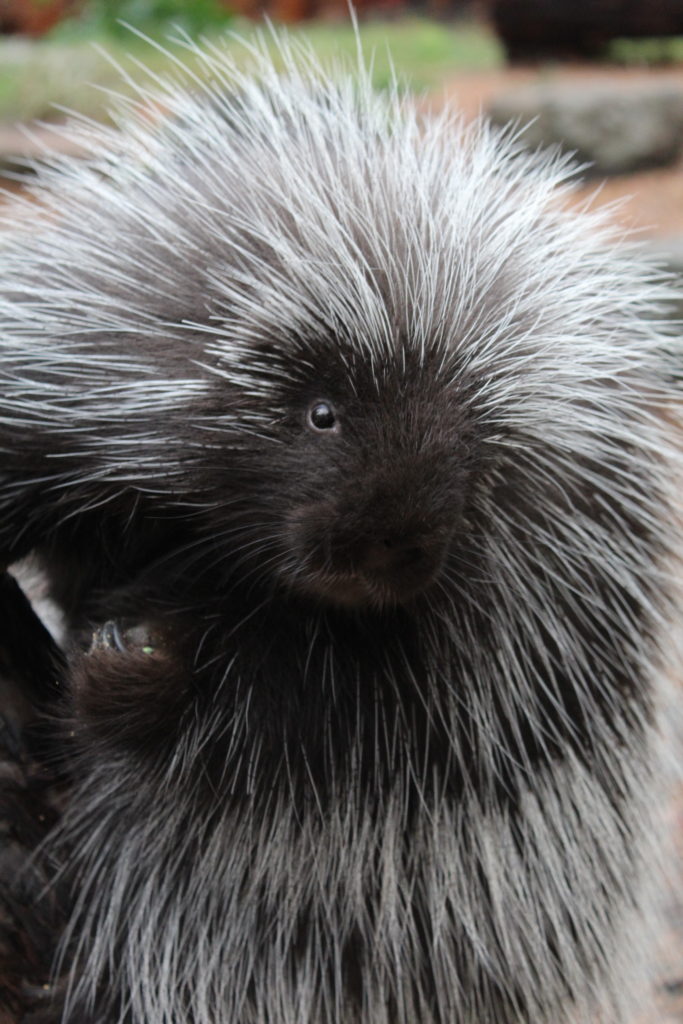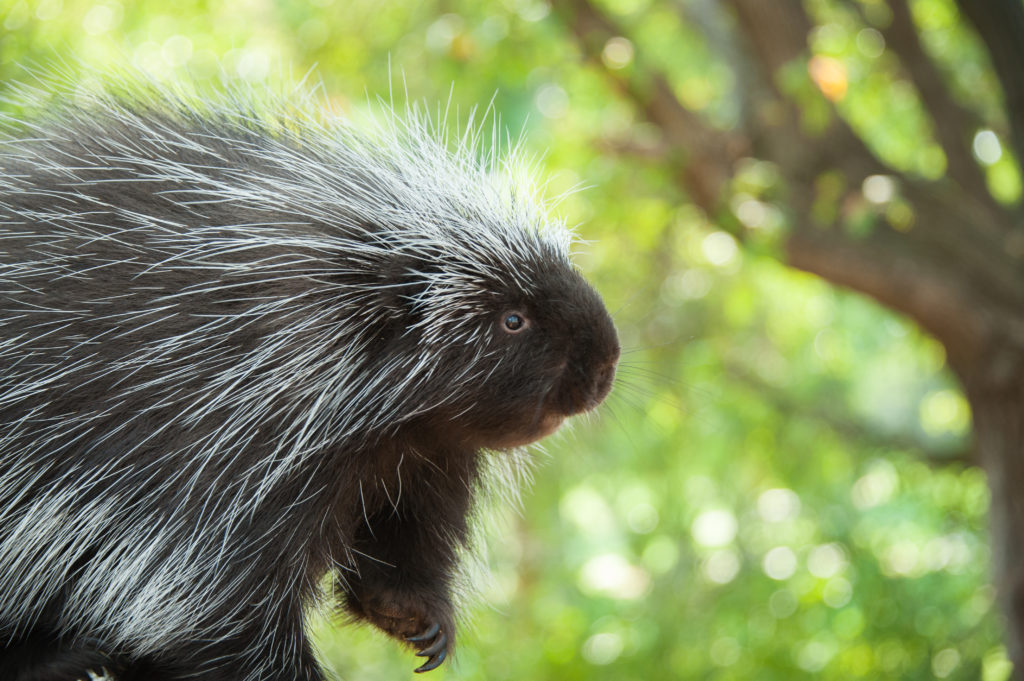North American Porcupine
 North American Porupine
North American Porupine
Erethiszon dorsatum
Porcupines are found throughout North America in coniferous forests. They are called “arboreal”, which means they are incredible tree climbers. They use their long claws to scale up tall trees to evade predators during the day. When night falls, they descend to forage.
As North America’s second largest rodent, the largest being the beaver, porcupines have to constantly chew hard surfaces to keep those incisors at a good length. When they’re not feasting on wild vegetation, nuts, seeds or tree bark, they will chew on deer antlers or bones they find while foraging. When they venture into human populated areas, they have been spotted chewing on wooden tool handles and even latrines!
 Porcupines are incredibly slow and have poor eyesight. How do they protect themselves from predators? Those use the 30,000 barbed quills they have underneath the layer of fur and guard hairs. When they’re calm, the quills lay flat on their bodies. When a predator approaches, the porcupine will contact their muscles and expose the quills as a display. If that doesn’t scare off the predator, they will back up and slap at them with their tail, which is also covered in quills! Despite what they show in cartoons, porcupines cannot shoot out their quills, as they are just modified hair.
Porcupines are incredibly slow and have poor eyesight. How do they protect themselves from predators? Those use the 30,000 barbed quills they have underneath the layer of fur and guard hairs. When they’re calm, the quills lay flat on their bodies. When a predator approaches, the porcupine will contact their muscles and expose the quills as a display. If that doesn’t scare off the predator, they will back up and slap at them with their tail, which is also covered in quills! Despite what they show in cartoons, porcupines cannot shoot out their quills, as they are just modified hair.
Penelope, our resident porcupine, was born in captivity and raised by people. She came to Lindsay Wildlife in 2016 at only one month of age. Keepers raised her and taught her how to be a porcupine, including how to climb and get into enrichment to forage for food!
Although she loves to eat nearly every type of fruit and vegetable offered to her, Penelope’s favorite type of food is actually her rodent blocks, which are just pressed alfalfa. Keepers jokingly call these her “porcupine cookies”!
